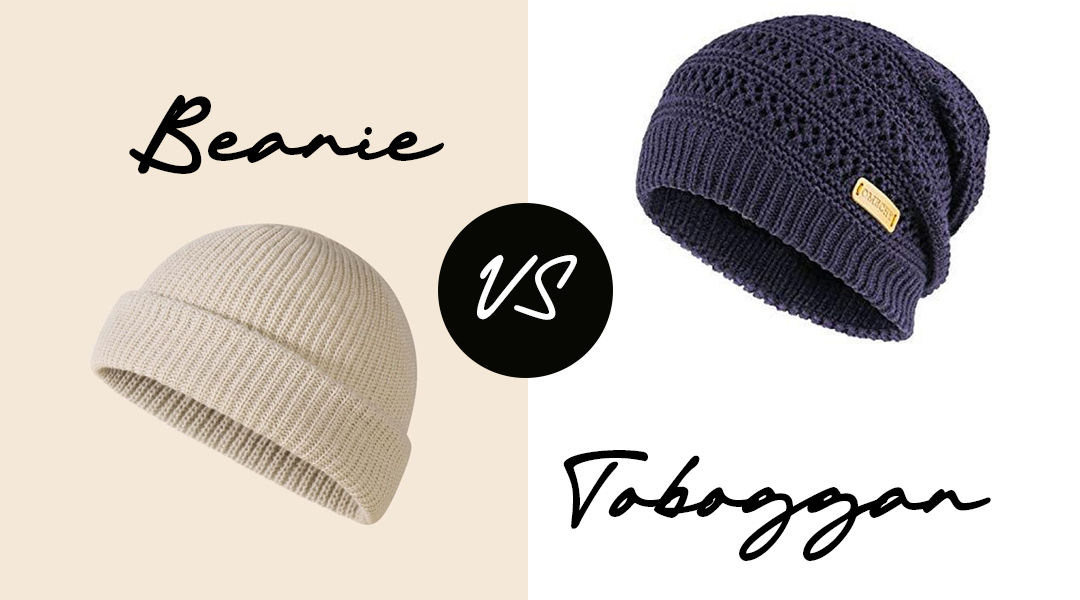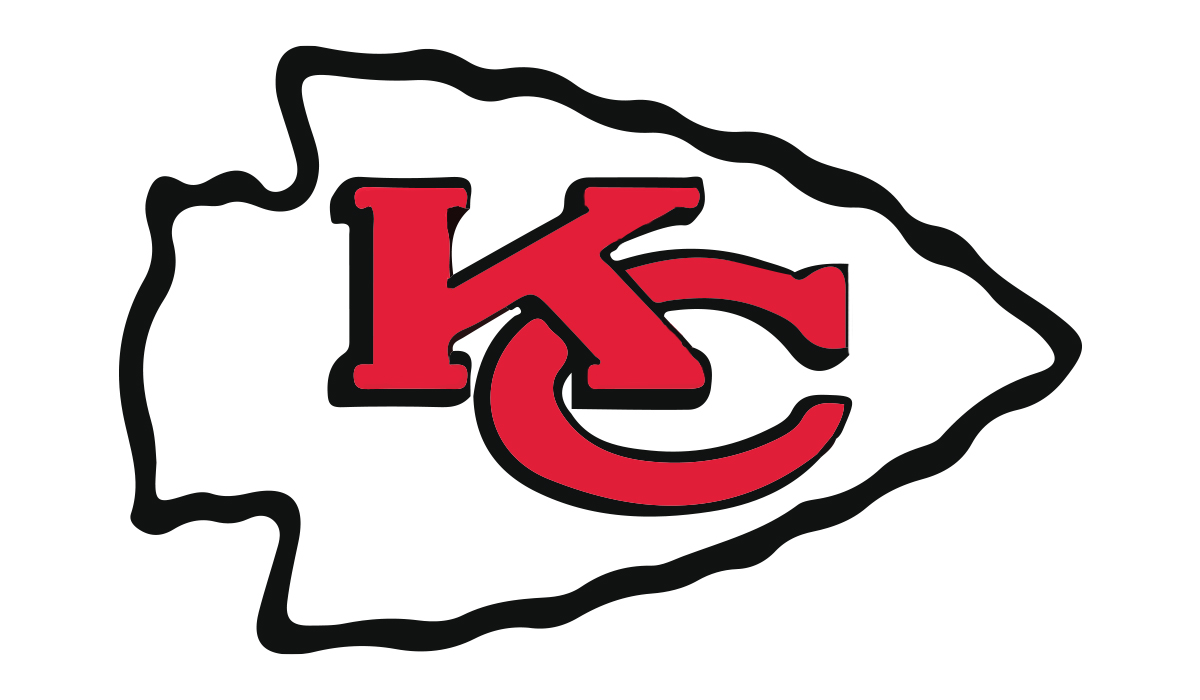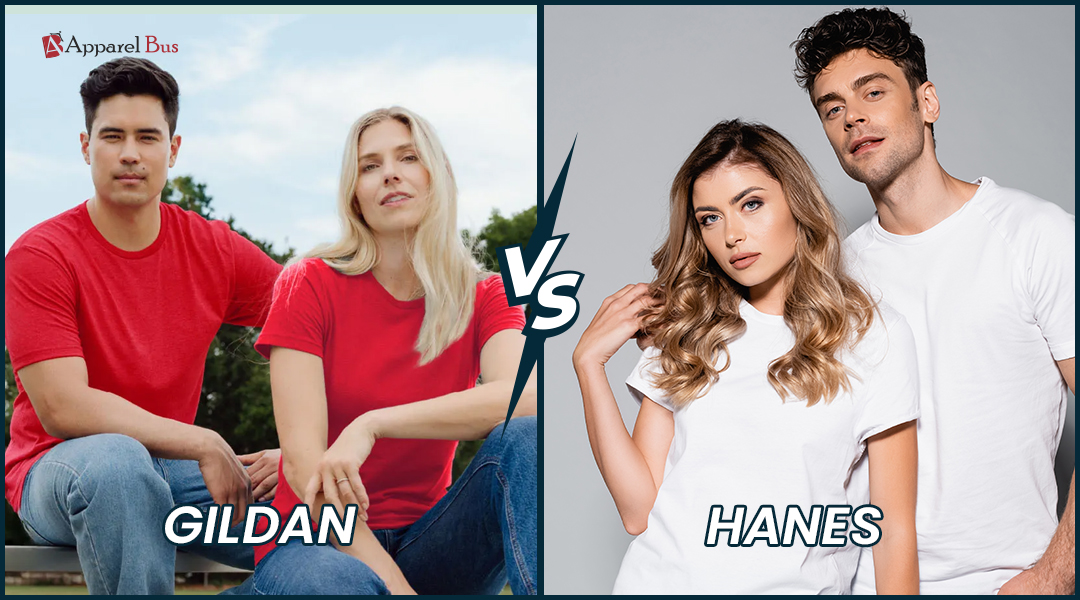Beanie vs Toboggan: Which Cold-Weather Hat Should You Choose?
When temperatures drop, two hats dominate the winter conversation: the beanie and the toboggan. You’ve seen both on shelves and probably worn one yourself. But are a beanie and a toboggan the same thing? Not quite.
While many people use the words interchangeably, these two winter hats are designed for different conditions and purposes. Beanies are more casual and lightweight, while toboggans are made to tackle severe cold. The difference isn’t just in the name: it’s in how, when, and why you wear them.
Whether you're shopping for everyday comfort, planning for harsh weather, or buying in bulk for your business, this guide will help you choose the right hat for the right moment. Let’s start by clearing up the confusion.
What Is a Beanie?
A beanie is a close-fitting knit hat designed to cover the top and sides of the head. Known for its snug, head-hugging fit, it’s typically made from woven fabrics like wool, acrylic, or synthetic blends; offering both warmth and everyday style. Most beanies sit just above or at the ears, though longer versions like slouchy beanies provide extra coverage.
Beyond function, beanies have become a staple in casual fashion. They offer a clean, minimalist design with no brim, making them easy to pair with just about any outfit. Whether you're out on a chilly morning or layering up for winter, a beanie adds both comfort and a laid-back look.
Common Beanie Fabrics:
Beanies usually come in soft and stretchy materials. Acrylic is the most popular option due to its affordability and comfort. Wool and merino wool offer natural insulation and breathability. Some high-end beanies use cashmere or organic cotton for softness. Fleece-lined options add warmth without bulk.
Types of Beanies You’ll Find:
- Cuffed Beanies: The most traditional style with a fold at the bottom.
- Slouchy Beanies: Extra length at the back for a relaxed look.
- Fisherman Beanies: Shorter, cropped fit that sits above the ears.
- Pom-Pom Beanies: A fun, playful version with a puffball on top.
Where Beanies Work Best:
You can wear a beanie on campus, at a skatepark, or on a hike. It works for mild to moderately cold temperatures. Lightweight cotton or acrylic beanies also transition well into early spring or late fall.
What Is a Toboggan Hat?
A toboggan is a thick, insulated knit cap designed for extreme cold. While it may look like a beanie at first glance, it’s built with heavier materials and often includes extra features like double layers or ear coverage for maximum warmth in freezing temperatures.
In some parts of the Southern U.S., people use the word “toboggan” to describe any knit hat. But traditionally, the term refers to winter headwear made specifically for snowy or icy conditions. Interestingly, in many Northern states, “toboggan” still means a sled, not a hat, so the name can cause some confusion depending on where you are.
Common Toboggan Fabrics:
Toboggans tend to use bulkier, warmer materials. Many styles are made from acrylic-wool blends, fleece, sherpa, or double-knit thermal yarns. Some even include weather-resistant linings or moisture-wicking interiors for outdoor sports.
Key Toboggan Features:
- Heavy Cuffing: Thicker rolls at the base offer extra warmth over the ears.
- Double Layers: Most toboggans include two or more layers of insulation.
- Ear Flaps or Full Coverage: Some styles cover the ears and neck.
- Moisture Resistance: Designed for snow, sweat, or wet conditions.
When to Choose a Toboggan:
If you're heading out to shovel snow, go skiing, or spend time outdoors in below-freezing weather, a toboggan is your best bet. It seals in warmth, stays in place, and handles moisture better than lightweight beanies.
Comparison: Beanie vs Toboggan
|
Feature |
Beanie |
Toboggan |
|
Fit |
Snug, form-fitting around the head |
Thicker, may extend further over ears and neck |
|
Fabric |
Acrylic, wool, merino wool, cotton blends, fleece-lined |
Acrylic, wool blends, fleece, sherpa-lined, double-knit thermal yarns |
|
Bulkiness |
Low-profile, easy to fold into pockets |
Bulkier, less compact, may not fit under helmets |
|
Styling |
Versatile; streetwear, smart-casual, layered winter looks |
Functional—pairs best with heavy coats or outdoor gear |
|
Warmth |
Moderate to warm, depending on lining and fabric |
High warmth; ideal for extreme cold or windy weather |
|
Best Use |
Everyday wear, casual outfits, mild to cold climates |
Outdoor work, snow sports, freezing temperatures |
|
Breathability |
High (especially cotton/wool blends) |
Lower due to thicker insulation |
|
Style Variety |
Cuffed, slouchy, pom-pom, fisherman, ribbed |
Mostly thick, cuffed, or double-layered styles |
|
Moisture-Wicking |
Moderate (acrylic/wool blends); low for cotton |
High if fleece or performance fabric is used |
|
Price Range |
Typically lower unless premium wool is used |
Often slightly higher due to heavier build and insulation |
Warmth & Functionality: Which One Should You Choose?
- For Extreme Cold: A toboggan delivers outstanding heat protection along with its fleece lining and earflap accessories.
- For Everyday Wear: Beanies work better in diverse outfits because they blend style with lightweight comfort.
- For Outdoor Activities: Toboggans give better defense during winter hiking or ski activities.
- For Style & Comfort: The wide range of beanie styles makes them preferred by those who care about their fashion appearance.
Buying Guide: What to Consider
- Material: Wool and fleece materials provide optimal insulation during cold conditions.
- Fit: The hat should fit well without being overly tight to comfortably cover your ears.
- Usage: Choose your hat according to both environmental conditions and anticipated physical activities.
- Design: The beanie collection provides numerous design options, while toboggans focus more on operational effectiveness.
Styling Tips: Beanies vs Toboggans
Beanie Styling Ideas
- Minimal Streetwear: Pair a black cuffed beanie with a neutral hoodie and bomber jacket.
- Retro Smart Casual: Combine a fisherman beanie with a denim jacket, turtleneck, and slim chinos.
- Layered Winter Look: Match a slouchy beanie with a wool coat and scarf for cold, urban mornings.
- Youth Style: Pom-pom beanies go great with puffer jackets and joggers.
Toboggan Styling Ideas
- Workwear Ready: A double-cuffed toboggan with a parka or flannel-lined jacket works for outdoor jobs.
- Ski or Snow Vibes: Choose a fleece-lined toboggan under your helmet or hood when hitting the slopes.
- Cold-Day Commuter: Pair a sherpa-lined toboggan with a waterproof trench for stormy city walks.
- Rugged Explorer: Mix a dark wool toboggan with a heavy flannel, cargo pants, and hiking boots.
Care Tips for Both Hats
Beanies:
- Hand wash in cold water using mild detergent.
- Avoid stretching or wringing.
- Lay flat to dry to retain shape.
Toboggans:
- Use a gentle machine cycle or hand wash, depending on fabric.
- Avoid heat drying; fleece and wool may shrink.
- Store in a breathable bag during the off-season.
Do's and Don'ts to Consider
Do’s:
- Pick wool or fleece materials because they deliver superior insulation performance.
- Make sure it fits comfortably so the hat stays secure on your head.
- Choose a hat style that harmonizes with your outfit and the occasion.
- Go for a toboggan if you want added warmth for outdoor cold.
- Use a beanie when you want daily versatility.
Don’ts:
- Avoid low-grade synthetic materials that don’t retain heat.
- Don’t prioritize appearance over practical features.
- Don’t wear hats that are too tight or too baggy; they reduce comfort and effectiveness.
- Don’t skip coverage; ensure your hat covers your ears completely.
- Avoid single-layer beanies during extreme freezing temperatures; choose multi-layered instead.
Final Thoughts: Which One Should You Choose?
- If you live in a place with mild to moderately cold winters, a beanie should be your go-to. It’s stylish, versatile, breathable, and fits into everyday outfits.
- If you’re working or playing in freezing temperatures, choose a toboggan. It traps heat better, keeps you dry, and protects your ears and neck during extreme weather.
- Want the best of both? Stock up on both styles. Keep beanies in your everyday rotation, and pull out your toboggan when winter really bites.
Shop Beanies and Toboggans in Bulk
Looking to buy high-quality winter hats for your retail store or brand? Apparelbus carries a wide range of blank beanies and toboggans from top brands, perfect for printing, embroidery, or reselling. Check out best sellers:
Ready to stock up? Browse Winter Hats in Bulk Now and stay ahead of the cold.
Frequently Asked Questions
Technically, they’re both knit hats, but toboggans tend to be thicker, warmer, and made for extreme cold or snow. Beanies are usually lighter and more versatile for everyday wear. Think of a toboggan as your go-to for snowstorms, and a beanie as your everyday cold-weather essential.
This is mostly a regional and cultural habit. In Southern dialects, toboggan became a common term for any warm, knit winter cap. This usage is more common among older generations and in rural areas. In contrast, most northern states and urban regions use the term beanie instead.
Focus on fabric, fit, and function. Acrylic and wool blends offer warmth and durability. Beanies with cuffed or slouchy styles appeal to style-conscious buyers, while toboggans with insulation and moisture resistance are great for performance or outdoor use.
Yes; both styles are designed for anyone. Beanies come in a wide range of styles (cuffed, slouchy, pom-pom), and toboggans are built more for function than fashion. Either style works for men, women, and kids, depending on the fit and occasion.
A toboggan is usually the better choice for snowboarding, skiing, or working outside in freezing weather. Look for versions with fleece lining, double layers, or ear flaps. Beanies are great under helmets or for layering, but toboggans offer more warmth and moisture protection.







Leave us a comment